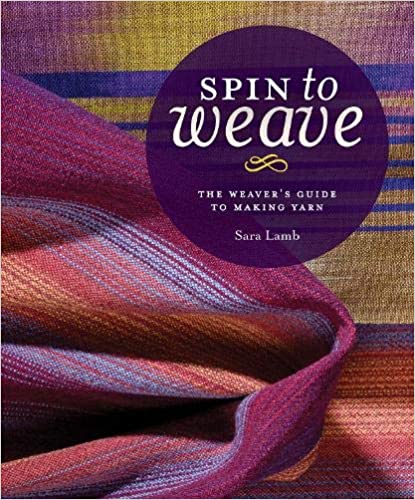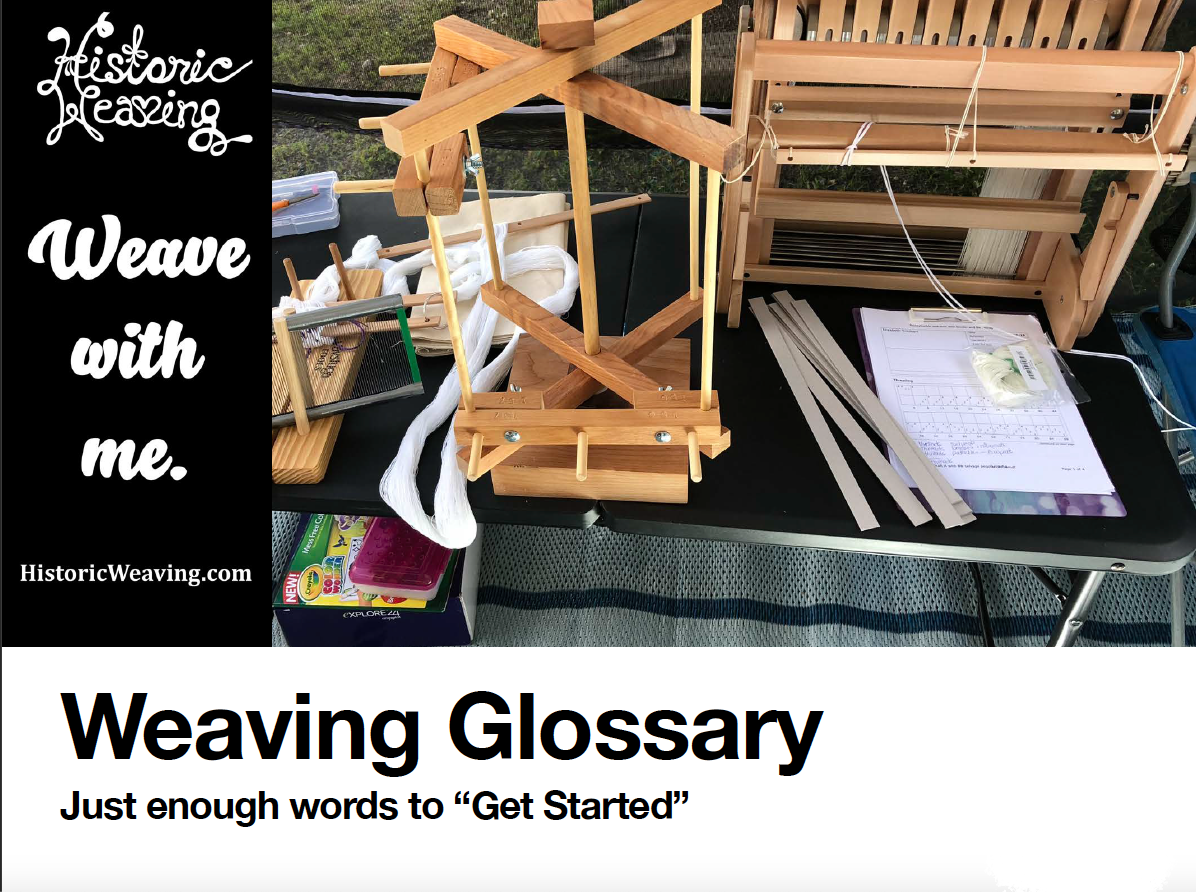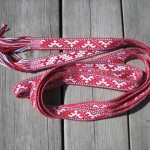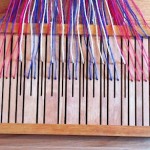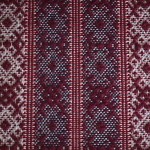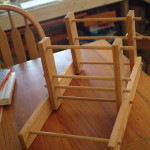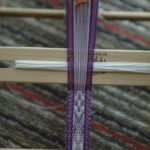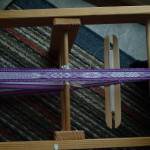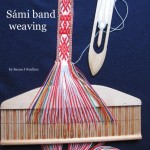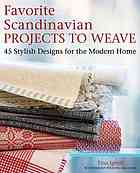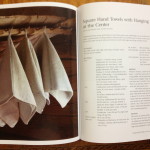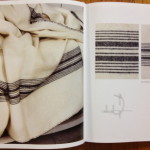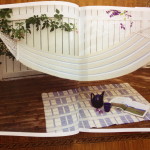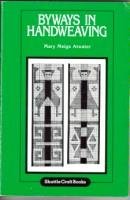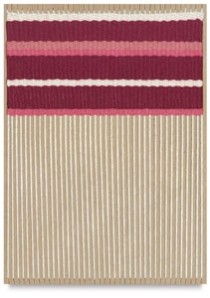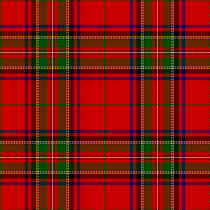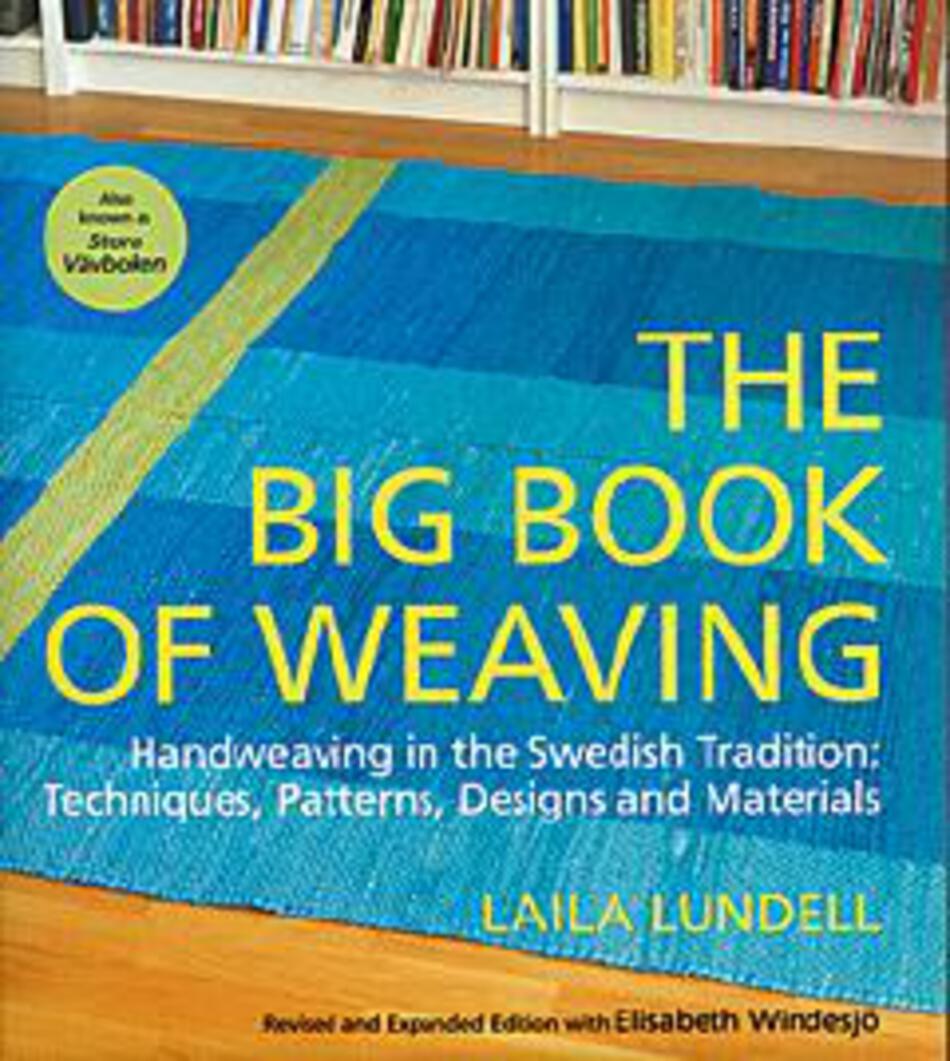
The Big Book of Weaving – Handweaving in the Swedish Tradition: Techniques, Patterns, Designs and Materials by Laila Lundell has been my reading selection for the past few weeks. There are books that you speed through and they give you great ideas. This is a book that is perfectly suited for winter months when you can take time to digest a section before moving on to the next.
As an experienced weaver, I was not sure that this book would have many surprises for me. I was wrong. In each section I was able to pick up a new tip or trick that I had not yet tried.
The book is a wealth of information for weavers making use of Swedish style floor looms, there is an excellent write up of dressing a floor loom using the front to back method in which the weaver pre-sleys a reed instead of using a raddle.
Laila also describes in detail the hanging of counter balance horses, as well as detailing the set up of lamms and tying them up.
There is also a great explanation of how to adjust the shed on a countermarche loom.
This book has often been used as a textbook for new weavers wanting to know how to get started with their first floor loom. The project sequence starts from the very beginning using plain weave and moves through pattern weaving. The author presents both 4 and 8 shaft projects for each type of weaving.
Projects that I found quite interesting – “Kitchen Towels with Small Blocks” that can be woven with 16/2 cotton. In this project Ms. Lundell also offers a complete project plan for weaving the bands needed for hanging towels. A great mystery solved!
I found her explanation of reading and writing warp sequences helpful for planning striped warps. She also explains how to adjust these sequences to meet the needs of your loom width and your particular project.
If making a drawdown from your draft is difficult there is also a easy to understand section in the book that describes in detail how this process is completed.
The most stellar explanation for me as an experienced weaver was the section on warp spacing where she explains how you can use multiple ends in warping at one time and how they are to be pre-sleyed into the reed so that you do not need to cut ends or use a raddle to spread the warp.
The author also discusses Rag Rug making and planning and loom set up in detail. If making a rag rug for the first time you will want to review this section before setting up your next project.
There is a section on Warp printed fabric, in which she discusses materials for the dye, and the process of applying the color to the warp in detail. This is a planned future project for me.
I was fascinated by the Inlay weaving technique descriptions:
• H-V Technique
• Russia
• Dukagang
• Small and Large Dots
• Loop Technique
• Kilim
• Crabba
• Half Crabba
There are also detailed instructions on how to make use of a cartoon on a floor loom.
The author explains the use of a temple and the problems that it can solve for you.
The book contains detailed instructions on how to construct measuring templates for pattern repeats and for plaids.
This is a book that I expect weavers will consult often.
Best Quotes:
“Weaving truly is a big journey of discovery!”
“Choosing the right materials for a weaving takes a lot of knowledge. It’s a good idea to train your eyes and fingertips to become familiar with various materials and to learn about their special qualities”
“Producing and comparing a variety of swatches, some good an some not-so-good, will help you tremendously when you plan a new project”
Project Summary:
Kitchen Towels with Small Blocks
Striped Kitchen Hand Towels
Twill Rag Rug
Striped Pillows
Color-Effect Mohair Throw
A Small Alpaca Throw
Small Reverse-Treadled Rag Rug
Cord-Striped Bags
Checked Fabric
Long Table Runner in Rep Weave
Large Checked Rep Rug
Rosepath Band
Cotton Summer Curtains
Bags with Bead Panels
Large Alpaca Shawl
Decorative Rosepath Weaving
Boa with Rya Knots
Slit Rya for a Bench
Dice-Weave Pillow
Double Width Throw
Decorative Weaving with Paper Yarn
Paper Yarn Screen
Warp-Printed Fabric
Half-Linen Mats
Inlay Rag Rug
Old-Fashioned Weaving
Rag Rug x 2
Bathroom Mats
Alpaca Scarf
Four Decorative Sample Strips
Transparent Interior Furnishing Fabric
Furnishing Fabrics x 2
Room Divider
Cotton Baby Blankets
Linen Table Runners and Hand Towels
Coordinated Furnishing Fabrics
Colorful Pillows
Picnic Blanket
Woolen Baby Blanket
Link to The Big Book of Weaving on the weaving resources page:
https://historicweaving.com/wordpress/weaving_resources/the-big-book-of-weaving


